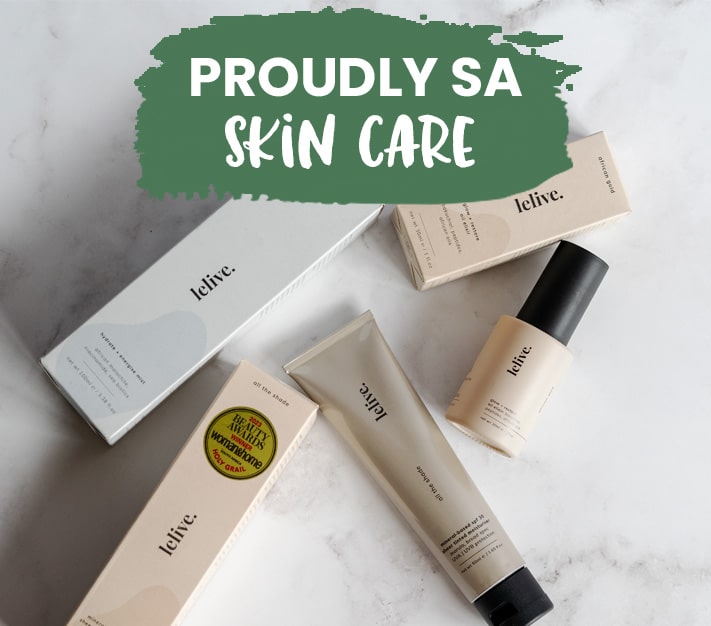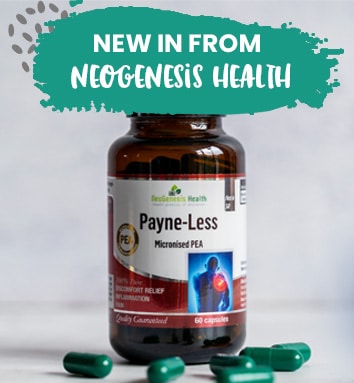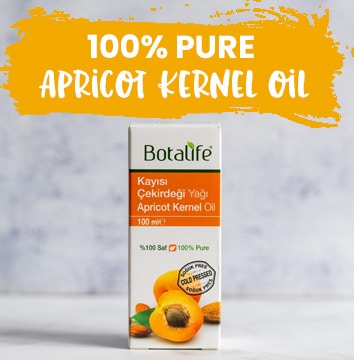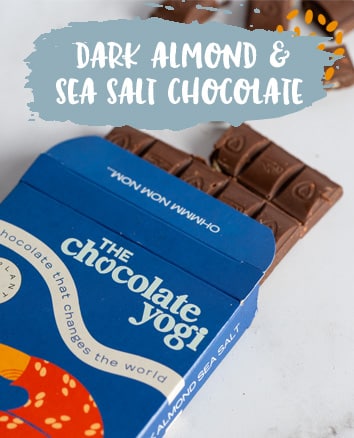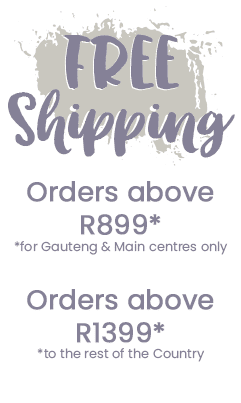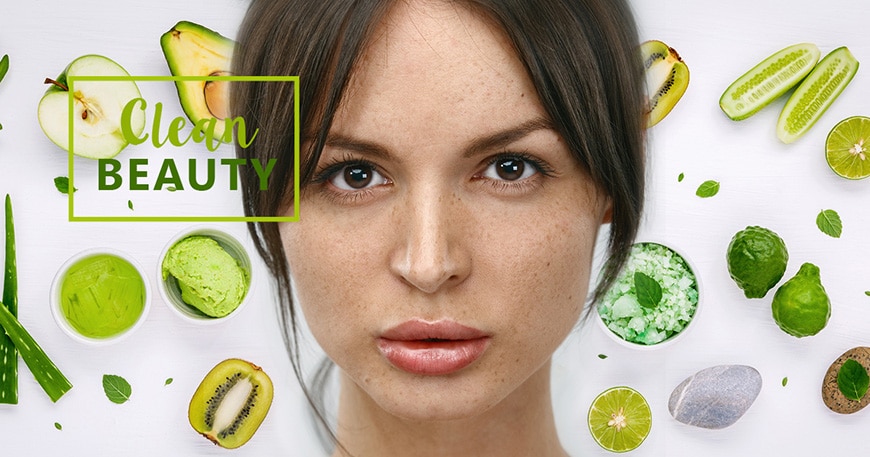
The holiday season is fast approaching and the countdown to the end of 2017 has begun. With that in mind, it’s time to start thinking about what you want to change and improve in 2018; what can you do to ensure a happier, healthier lifestyle? Well, why not jump on an already rapidly growing trend: clean beauty. Clean beauty has been on the rise throughout 2017, with many of us becoming fed up with being told that we need to expose ourselves to toxic chemicals on a daily basis to feel beautiful.
What does ‘clean beauty’ mean?
You’ve probably seen the phrase in women’s magazines, Facebook articles and even in stores. Clean beauty simply refers to non-toxic beauty products which are safe, organic and earth-friendly. Many beauty brands marketed as natural or organic are often neither of these things. Instead, cosmetics companies are capitalising on the rising trend by adding misleading buzzwords to their labels and billboards.
Chemical-filled beauty brands can boast ‘all natural’ ingredients and claim to be organic for the same reason as we explored previously in our entry on feminine hygiene products; the products are not effectively regulated. Right now, companies are allowed to put nearly any chemical into personal care products, including known carcinogens. This is a frightening thought, as we have discovered that even low doses of certain chemicals can contribute to cancer, birth defects, learning disabilities and other health problems. The average woman uses more than 10 personal care products every day, containing more than 100 chemicals that we ingest, inhale and absorb through our skin.
Until fairly recently, we didn’t pay very much attention to the ingredients in our skincare and make-up products. If it left our skin feeling softer and our cheeks looking perfectly rosy, we slathered it on daily. Recently, we’ve become more conscious of the fact that putting chemicals on our skin means that those chemicals end up inside our bodies. Your make-up and skincare products probably contain a variety of harmful and damaging properties, including:
Lead
We’ve known that lead is dangerous to our health since the 1970s.Lead poisoning affects the brain and can cause abdominal pain, headaches, irritability, memory problems, fertility problems and in extreme cases, death. Lead poisoning is also thought to be responsible for almost 10% of intellectual disabilities of otherwise unknown causes. For these reasons, lead is strictly monitored in paint, furniture and household products. So why is it showing up in our foundation, lipsticks and even whitening toothpaste?
Recently, the Campaign for Safe Cosmetics found Lead in over half of the 33 brands of lipstick they tested. A more recent study by the Food and Drug Administration (FDA) tested popular brands and found 400 that contained potentially harmful amounts of Lead.
How does such a toxic chemical end up in our cosmetics? Lead isn’t actually an added ingredient. It occurs through contamination, the most common source of this contamination being colour additives.
Formaldehyde-releasing preservatives
Formaldehyde is caused by the breakdown of certain chemicals and is toxic and volatile. It has a variety of industrial uses, but most of us come across it during Biology classes in our younger years; it’s the murky embalming fluid in the glass boxes which contain dead frogs, mice and other unfortunate creatures given to science.
So what is this repugnant chemical doing in our mascara, pressed powders and eyeliners? It acts as a preservative and a conditioning agent, functions which could be achieved through much safer means. In addition to potentially causing cancer, this ingredient can cause skin sensitivities and irritation.
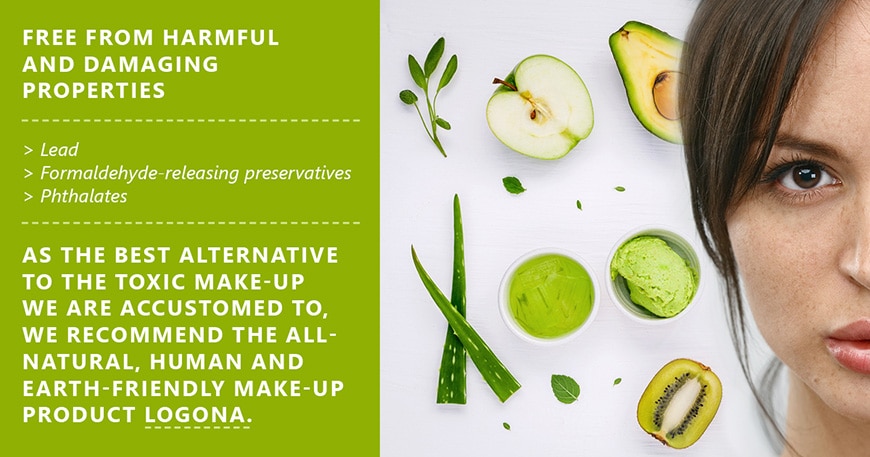
Phthalates
Phthalates are a group of chemicals that have been shown to be disruptive to the endocrine system, which is responsible for hormone production. Such interference can lead to developmental, reproductive and neurological damage. Exposure to phthalates is thought to be responsible for abnormal reproductive function and decreased production of testosterone in males, as well as decreased male fertility. Studies have also shown a link between phthalates and premature delivery and endometriosis in women.
So, why are these chemicals added to your beauty products? Phthalates are used to make products hold their colour and scent better. Deodorant, lip balms and nail polish – any chemical beauty product with a ‘fragrance’, which is usually what the chemicals are listed as in the ingredients of beauty products.
What are the alternatives?
For many of us, make-up gives us confidence and the chance to enhance our natural features to our liking. Whether we wear it every day or just for special occasions, we shouldn’t have to give up our smoky eye and plumped lips because of irresponsible cosmetics companies. As the best alternative to the toxic make-up we are accustomed to, we recommend the all-natural, human and earth-friendly make-up ranges such as LOGONA and BENECOS.
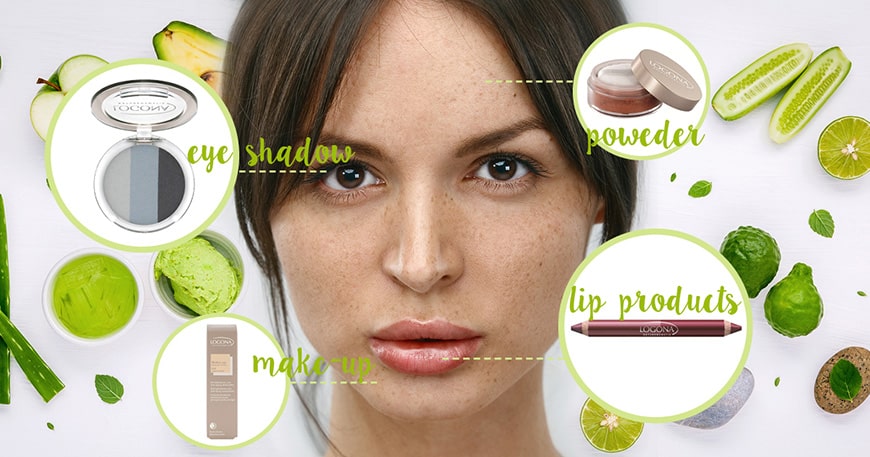
Their products are free from toxic and dangerous additives and chemicals. They use only the highest quality, natural raw materials, such as premium vegetable oils and waxes, herbal extracts, earth minerals and essential oils derived from organic agriculture. They use the natural, amazing abilities of plants in various forms; oil, extract and fragrance, in their products.
All the plants used to create their products come from controlled organic farming and wild collection. Together, they form high-quality active ingredient complexes, which pamper skin, hair and body. Over 60 different plant extracts are used in Logona products, including chamomile from Egypt, rosemary from France, linden blossom from Croatia and horsetail from Portugal.
From their soft as silk Natural Finish make-up, a stunning anti-aging foundation, moisturising Double Lip Pencils, their long-lasting eye shadows, Vegan Mascaras and foundation-fixing loose powder, to name a few, companies like Logona and Benecos are at the absolute forefront of the clean beauty trend.
So make sure you start treating yourself better in the coming year; feel beautiful without the risks of chemically produced cosmetics. The clean beauty trend shows no signs of slowing, with more and more of us not willing to compromise our health for our products, be a part of the beauty revolution.




